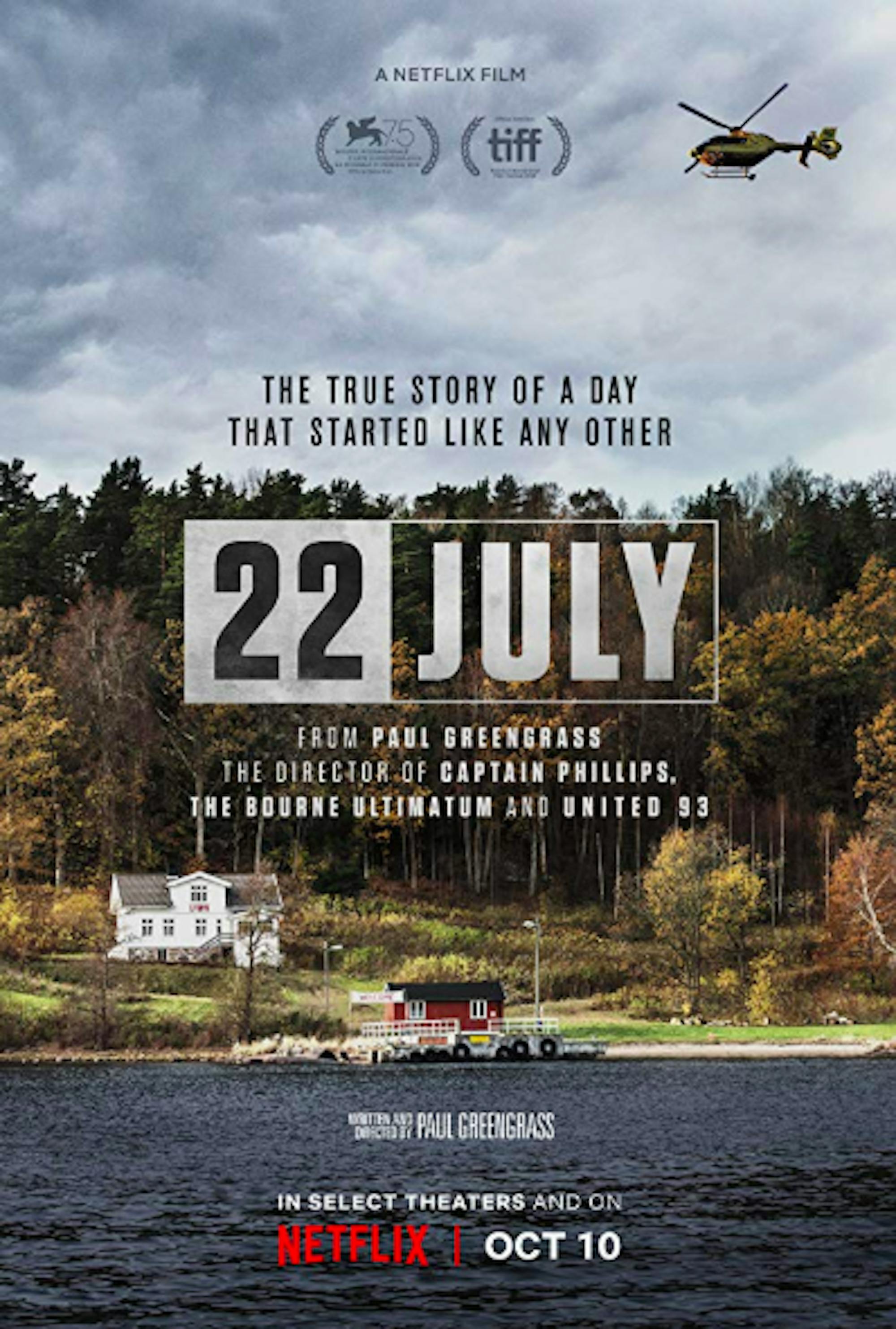British director Paul Greengrass first gained mainstream recognition in 2004 with “The Bourne Supremacy.” The frenetic, rapid-cutting, unsteady camerawork of the Bourne series — somewhatderided by some critics as “shaky-cam” filmmaking — came to define action movies for the remainder of the 2000s, including the venerable James Bond series.
Yet “22 July,” Greengrass’ Netflix-produced dramaabout the 2011 Norwegian terror attacks, takes place in an entirely different filmic world and arguably, a different world entirely. Shot in English with a Norwegian cast and crew, “22 July” is the second major film this year depicting the deadliest terror attack in Norwegian history; “Utøya 22. juli,” a Norwegian release portraying the attacks in one take in real time, premiered at the Berlinale in February.
In the film's depiction of the attacks, the camera sits unflinchingly in judgment as Anders Behring Breivik (Anders Danielsen Lie) stalks around the island of Utøya, the site of a Norwegian Workers' Youth League summer camp. Cinematographer Pål Ulvik Rokseth films Breivik from a distance through gently swaying birch branches while piercing gunshots intermittently explode across the screen. Viljar Hanssen (Jonas Strand Gravli), hiding on a beach at the bottom of a short cliff alongside his brother and a few other campers, briefly locks eyes with Breivik as he approaches the beach from the top of the cliff. As if in slow motion, he draws his gun. The campers begin running, and Viljar is shot multiple times.
This dramatic shift in filming style from Greengrass’ earlier work reflects wider changes in the political discourse of Norway, and in Europe as a whole, in the time since his first film was released. Breivik’s manifesto portrays him as a soldier of a modern Knights Templar, decrying a perceived Islamization of Europe and claiming that Norwegians have become a minority in our own capital. Despite the horrific violence of Breivik’s attacks, since that fateful day, his viewshave increasingly found receptive listeners in the wave of right-wing populism and nationalism that has swept across Europe, the U.S. and parts of South America.
“22 July” opens with Breivik’s attacks: Breivik first plants a car bomb near the office of Prime Minister Jens Stoltenberg (Ola Furuseth), killing eight people. He then travels to Utøya, where he murders 69 more in a 72-minute rampage. After Breivik’s arrest, Greengrass takes a sweeping approach to depicting the aftermath of the attacks. In the intersecting storylines that follow — Hanssen’s long road to recovery and struggle with PTSD, the Prime Minister’s inquest into how his security services failed to stop the attacks and the trial of Breivik as he retracts his earlier insanity plea and stands trial under the reluctant eye of his lawyer (Jon Øigarden) — Greengrass holds up to scrutiny a nation cut down to its knees. He also confronts an unpleasant truth: Perhaps this nation may not be entirely innocent in breeding the hatred that inspired.
It is easy to forget just how startlingly mainstream a less radical version of Breivik’s views have become in the seven years since Utøya. In 2011, the right-wing populist Sweden Democrats had only just entered the national legislature, the Riksdag. Alternative für Deutschland (AfD), theneo-Nazi linked party that now holds 92 seats in Germany’s Bundestag, had yet to be founded. The war in Syria, the source of over one million refugees in Europe, was just months old.
With the benefit of hindsight, Greengrass inserts winks and nods to his audience about the sobering reality to come. Shortly after the attack, Stoltenberg pauses for a moment of reflection as an unseen television broadcasts news of immigration being a primary issue in Norway’s upcoming local elections. In a moving testimony, Lara (Seda Witt), Viljar’s friend who lost her sister in the massacre, tearfully recounts her experience as a refugee adjusting to life in Norway, asking what about her family so frightens people like Breivik.
Yet, as Lara’s testimony continues, she recalls how her experience at Utøya on the night before the massacre reminded her of the home she has come to find in Norway. It is on this hopeful note that Greengrass chooses to end the film. The Norway depicted in “22 July” remains defiant in the face of the rising tide of right-wing authoritarianism — committed to healing and compassion in the way their nation feels it has upheld. In the face of the ugly underbelly of this seemingly cohesive Scandinavian society, “22 July” has confidence that Norway can withstand the difficult years to come.
‘22 July' confronts extremism with a poised face

A promotional poster for '22 July' is pictured.
Summary
“22 July” paints a poignant picture of Norway after 2011 terror attacks, despite its ambitious approach occasionally spreading thin.
3.5 Stars





